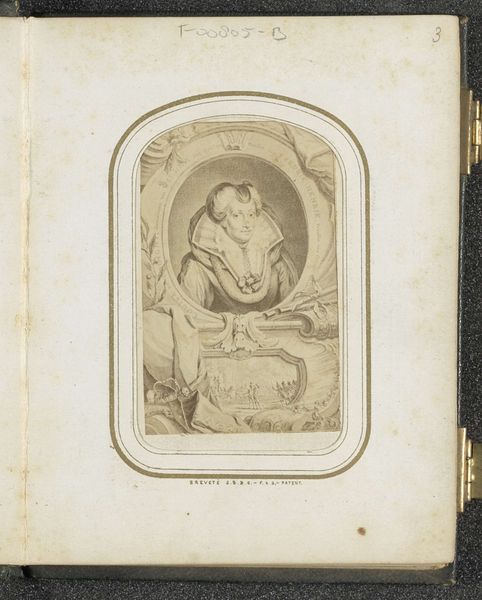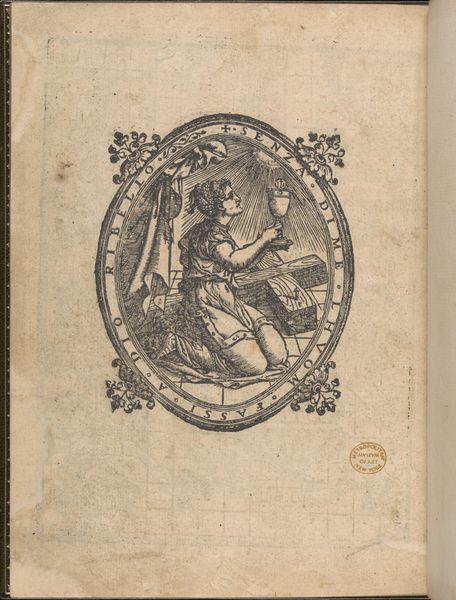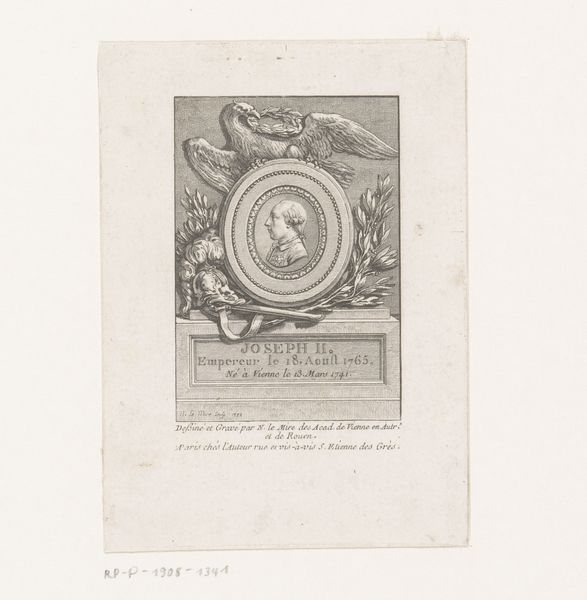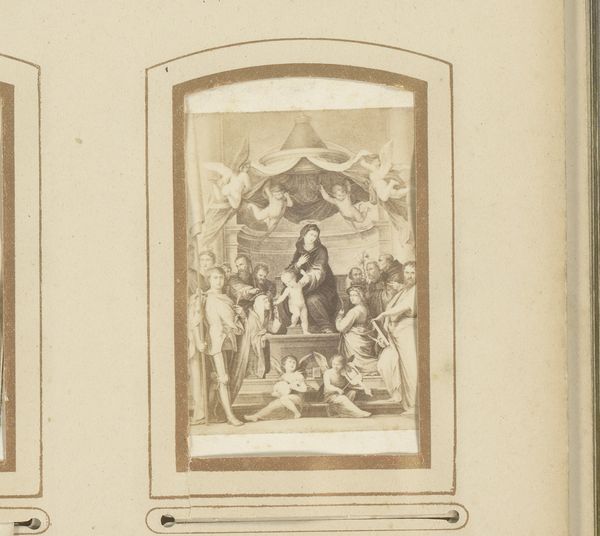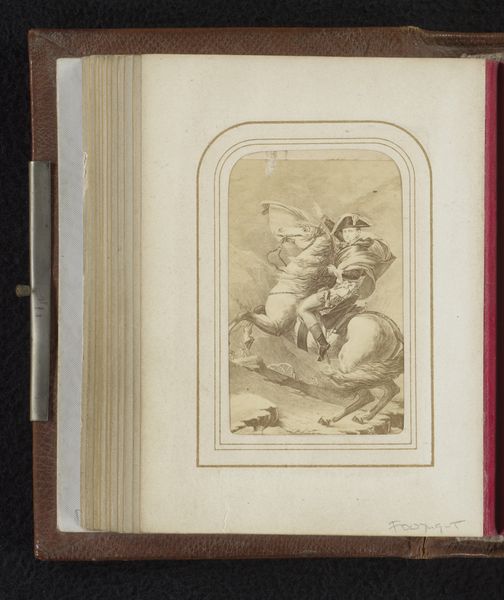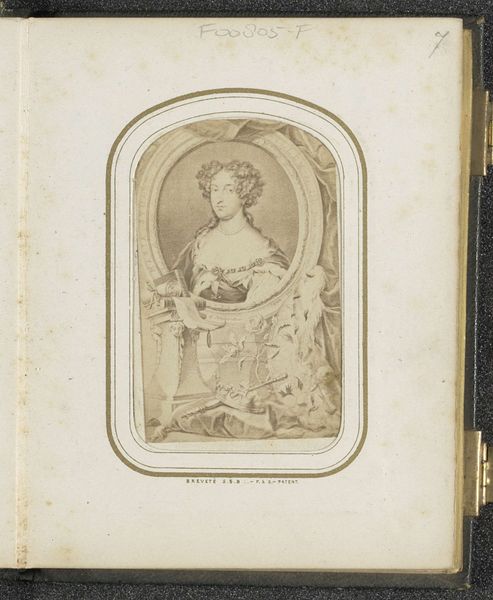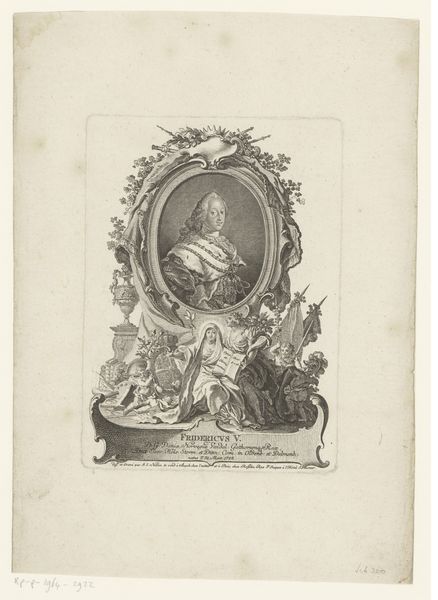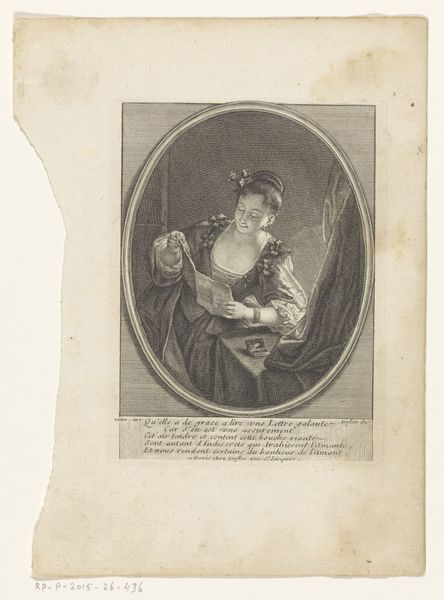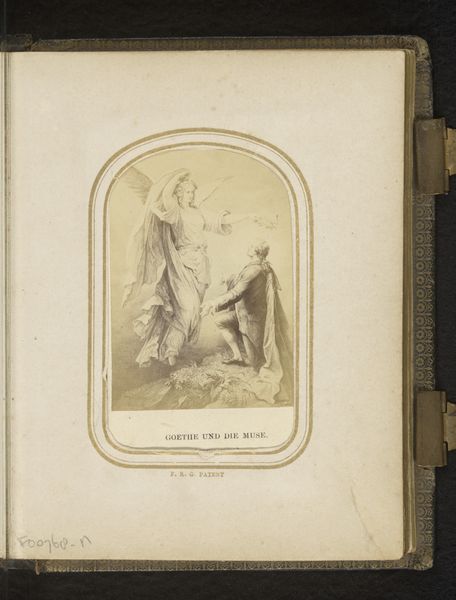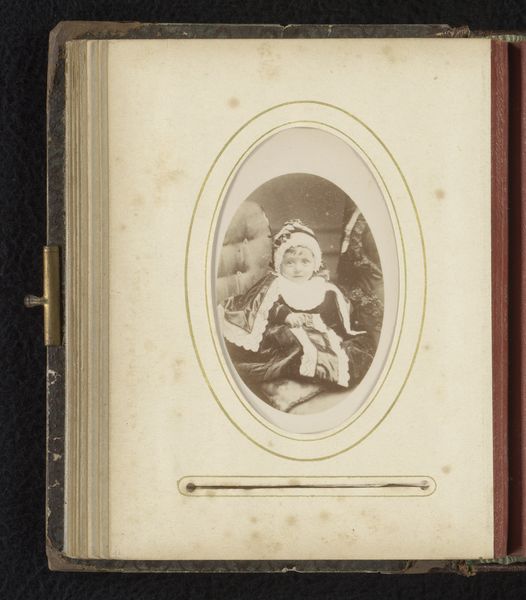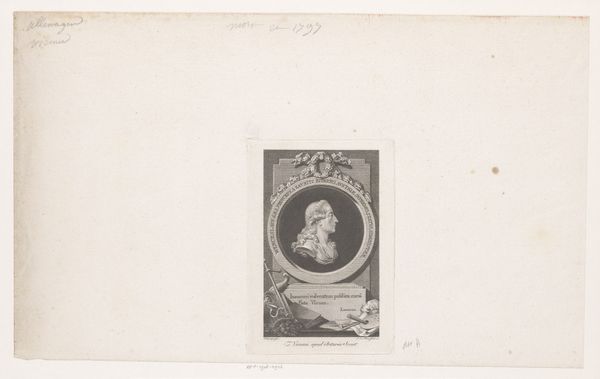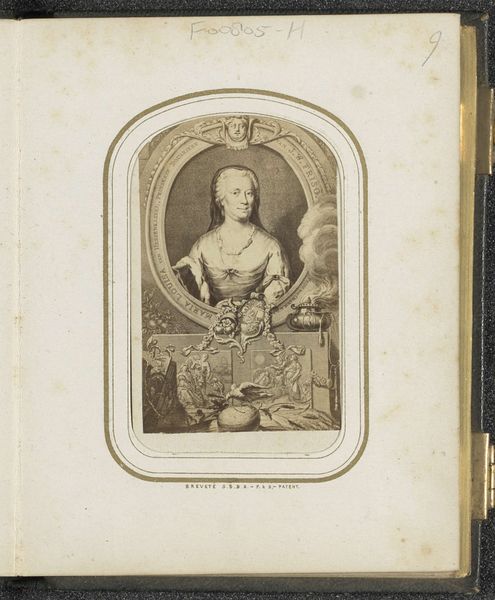
Fotoreproductie van (vermoedelijk) een prent van prins Willem V, prins van Oranje-Nassau, en zijn zus prinses Carolina c. 1860 - 1880
0:00
0:00
Dimensions: height 82 mm, width 52 mm, height 97 mm, width 57 mm
Copyright: Rijks Museum: Open Domain
Curator: This is a photo reproduction of what’s believed to be an earlier print, dating back to approximately 1860-1880. It features Prince William V of Orange-Nassau and his sister, Princess Carolina. The original artwork, by an anonymous artist, utilizes engraving as its method. Editor: My immediate impression is one of formal restraint, even coldness. The composition is very contained, very balanced; a diptych within a frame, carefully positioned figures... everything is controlled. Curator: Indeed. This controlled composition reflects Baroque sensibilities, which prized order and decorum. And you have to remember that print reproductions like this one were fairly common as ways to disseminate information and ideas. So we could say it served a cultural purpose, circulating the likenesses of prominent figures of the era. Editor: Absolutely. The symbolic weight is palpable—Willem holds a small, complex coat of arms and dons elaborate dress and adornments of royalty. And both he and his sister Carolina gaze directly outward, with serious expressions; almost imposing and certainly suggestive of the weight of history and inherited power that will rest on their shoulders. It would be interesting to find out the symbolism present on his garb. Curator: Look closely at the line work—see how it models their faces. The meticulous shading, particularly around the eyes and mouth, creates a sense of depth, despite the two-dimensional surface of the engraving, also notice the lack of dimension due to a vanishing point and very soft gradient on all subjects within the artwork. It has some flattening effects which were the style during this reproduction period. Editor: But those carefully engraved lines create visual links to much older traditions of royal portraiture. The visual symbols offer a kind of reassurance—they are part of an enduring historical narrative. The intention seems to be continuity— to establish not just status, but the long sweep of dynastic time, which is precisely what that coat of arms speaks to and represents visually. Curator: I find the image rather compelling. Editor: Yes, despite that coldness I mentioned initially. It's a compelling window into a world governed by very specific visual codes of power and influence. It makes you consider what meaning is lost or changed when art is re-produced again and again using technological means.
Comments
No comments
Be the first to comment and join the conversation on the ultimate creative platform.
